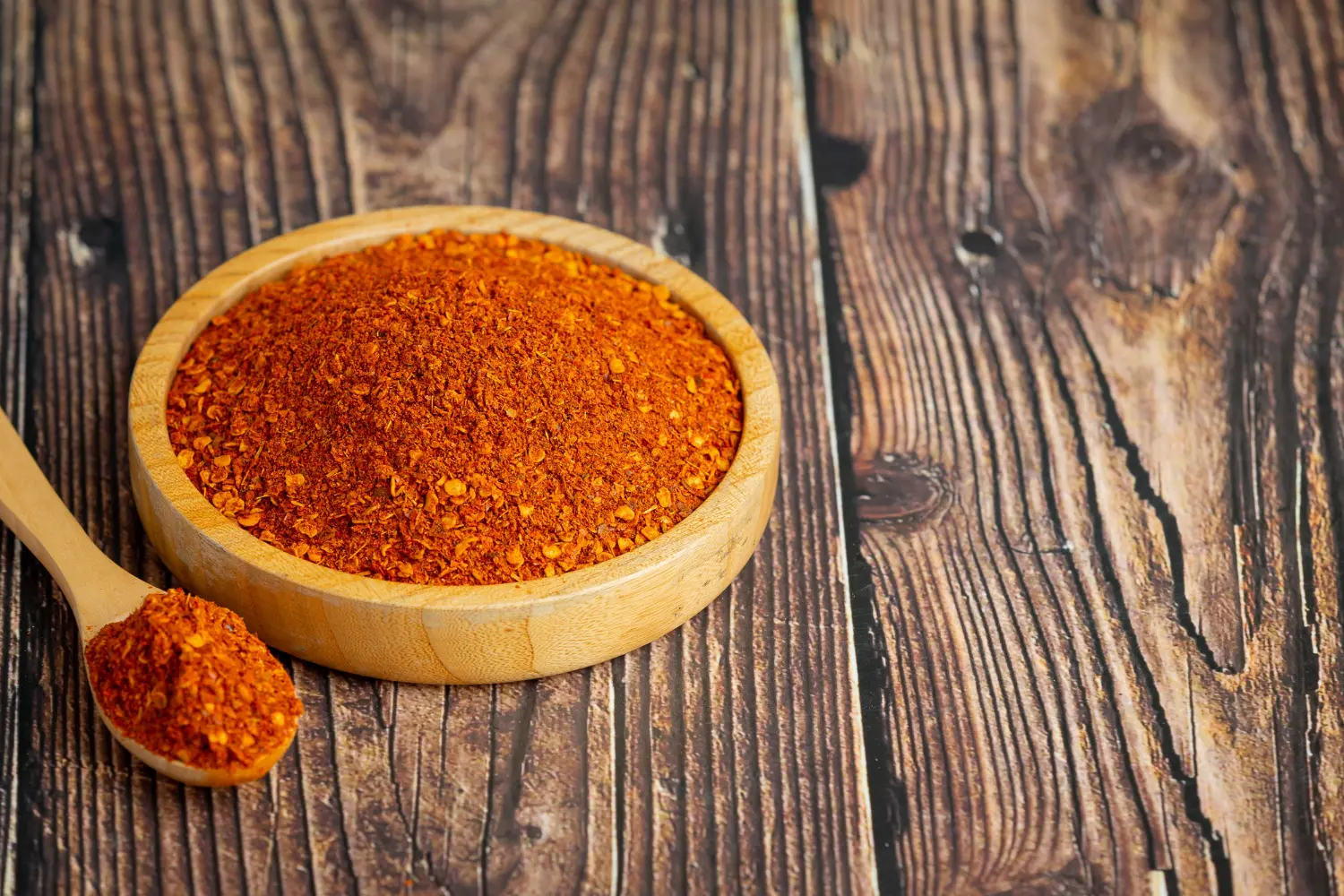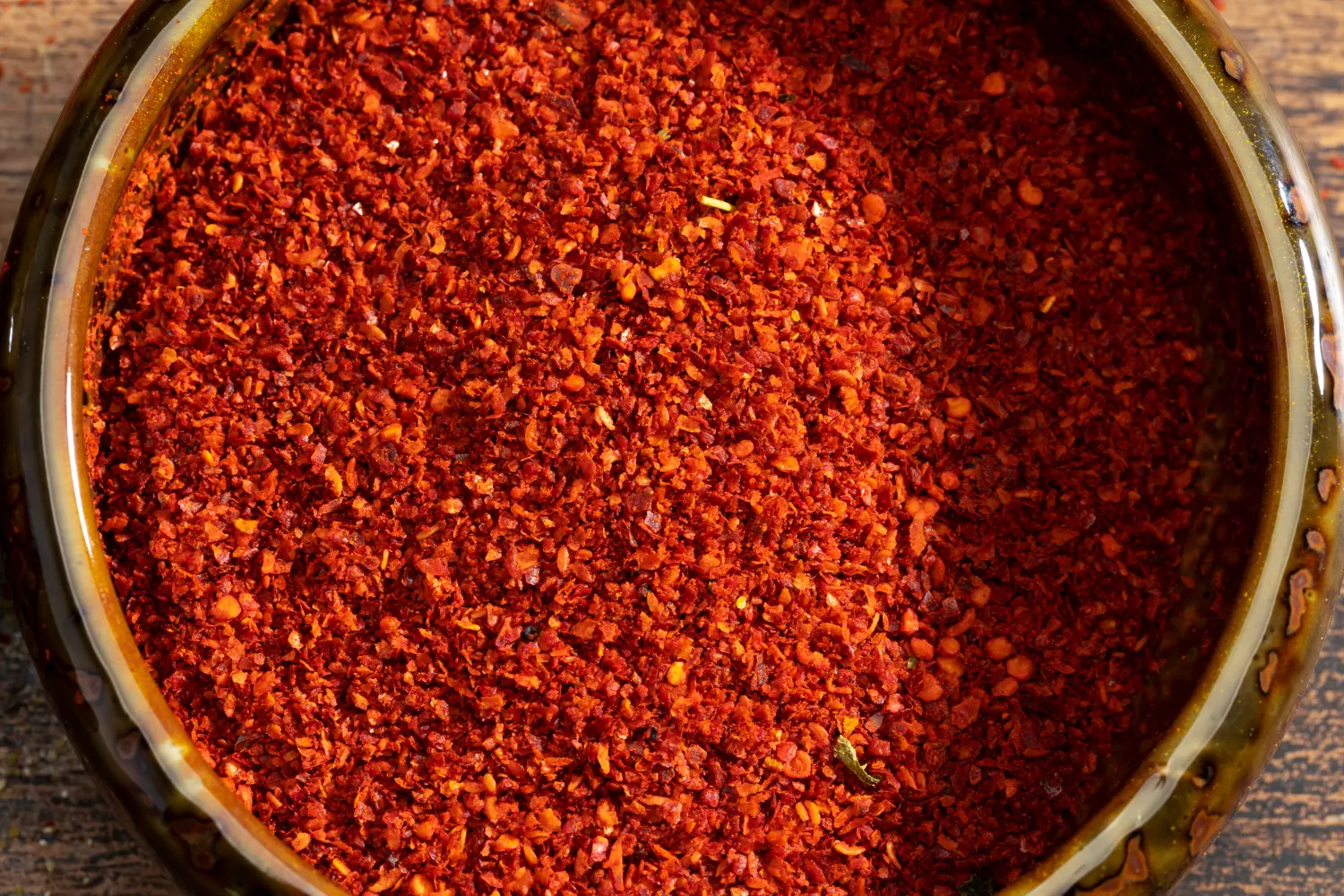Chorizo, a vibrant and flavorful sausage, is a staple in many cuisines, particularly in Spanish and Mexican dishes. The unique taste of chorizo largely depends on its seasoning, which is a blend of various spices that give it its distinctive flavor. Understanding the composition and importance of chorizo seasoning is crucial for anyone looking to replicate authentic chorizo flavors in their cooking.
The primary component of chorizo seasoning is chili powder, which provides the sausage with its characteristic heat and depth. Other essential ingredients include paprika, garlic powder, and onion powder, each contributing to the complex flavor profile of chorizo. These spices are readily available and can be blended at home for a fresh, customized seasoning mix. For a deeper dive into the world of chorizo, explore the Understanding Chorizo page on Wikipedia.
Incorporating chorizo seasoning into various dishes can transform their flavor profile. It’s not just limited to making sausages; this versatile seasoning can be used in stews, soups, and even vegetarian dishes, offering a smoky and spicy kick. For those interested in experimenting with chorizo seasoning in different recipes, the Chorizo Seasoning Secrets: Flavors, Tips, and Recipes article on CookingFamilyRecipes.com provides valuable insights and ideas.
The Importance of Seasoning in Chorizo :
The role of seasoning in chorizo cannot be overstated. It’s the heart and soul of this beloved sausage, turning simple ground meat into a culinary delight. The right blend of spices in chorizo seasoning not only imparts flavor but also influences the texture and color of the sausage, making it a crucial element in chorizo preparation.
Chili powder and paprika are the stars of the show, providing chorizo with its signature red hue and fiery taste. These spices, particularly paprika, come in various forms, each adding a unique dimension to the seasoning. For instance, smoked paprika introduces a deep, smoky flavor, while sweet paprika offers a milder taste. Understanding the Exploring Paprika Varieties can help in selecting the right type for your chorizo seasoning.
Additionally, garlic and onion powders contribute to the rich, savory notes in chorizo. These ingredients are essential in creating a well-rounded flavor profile. For those looking to create their own chorizo seasoning at home, the Easy Chorizo Spice Blend on Pinterest provides an excellent starting point.
In summary, the careful selection and balance of spices in chorizo seasoning are what make this sausage a beloved ingredient in many dishes. Whether you’re a seasoned chef or a home cook, understanding and mastering the art of chorizo seasoning can elevate your culinary creations to new heights.
Key Ingredients in Chorizo Seasoning :
Chili Powder: The Heart of Chorizo Flavor :
Chili powder stands as the cornerstone of chorizo seasoning, imparting a robust and piquant flavor that is unmistakably characteristic of chorizo. This spice, derived from ground chili peppers, varies in heat level and can be adjusted to suit individual taste preferences. The type of chili used in the powder can significantly influence the overall flavor profile of the chorizo.
- Heat Level: The spiciness of chili powder can range from mild to fiery hot. This variation allows for customization of the chorizo’s heat to cater to different palates.
- Flavor Profile: Apart from heat, chili powder also adds a subtle earthiness and complexity to the seasoning blend. It’s this depth of flavor that sets apart homemade chorizo seasoning from store-bought versions.
- Culinary Uses: Beyond chorizo, chili powder is versatile in its use, finding its place in various dishes to add warmth and zest.
For those interested in exploring different types of chili powders and their culinary applications, the Chili Powder: A Key Ingredient page on Wikipedia offers valuable insights.

Paprika Varieties and Their Impact :
Paprika, a ground spice made from dried red peppers, plays a pivotal role in chorizo seasoning. Its impact on chorizo’s flavor and color is profound, with different varieties offering distinct characteristics:
- Sweet Paprika: Provides a mild, sweet pepper flavor without adding heat. It’s ideal for those who prefer a gentler taste in their chorizo.
- Smoked Paprika: Infuses a smoky, deep flavor reminiscent of peppers dried over wood fires. This variety adds a rich, complex taste to the chorizo.
- Hot Paprika: Brings both color and a spicy kick, perfect for those who enjoy a bit of heat in their dishes.
Each type of paprika contributes uniquely to the chorizo’s overall flavor profile. The choice of paprika can transform the chorizo from a simple spiced sausage to a culinary masterpiece with layers of flavor. For a deeper understanding of these varieties, the Exploring Paprika Varieties article on Wikipedia is an excellent resource.
Incorporating the right paprika into your chorizo seasoning blend can significantly influence the final outcome of your dish. Whether you’re aiming for a subtle, smoky undertone or a bold, spicy flavor, the type of paprika you choose is key. For inspiration on using different paprika varieties in chorizo seasoning, the Homemade Chorizo Seasoning Blend on Pinterest offers creative ideas.
The Role of Garlic and Onion Powder :
Garlic and onion powders are essential in chorizo seasoning, contributing to its rich and savory flavor profile. These powders, made from dehydrated garlic and onions, offer a concentrated burst of taste that enhances the overall depth of the seasoning.
- Garlic Powder: Adds a pungent, slightly spicy flavor that complements the heat from chili powder. Its robust taste is crucial in balancing the other spices in the mix. For more information on garlic powder and its uses, the Garlic Powder in Seasoning page on Wikipedia provides detailed insights.
- Onion Powder: Brings a sweet, yet sharp, flavor that pairs perfectly with the garlic. It helps to round out the seasoning blend, ensuring a harmonious mix of flavors. The role of onion powder in seasoning can be further explored through the Onion Powder’s Role article on Wikipedia.
These powders are not just flavor enhancers; they also contribute to the chorizo’s aroma, making it more appetizing and inviting. Their inclusion in the chorizo seasoning is a testament to their versatility and importance in culinary arts. For those interested in creating their own seasoning blends, the Easy Chorizo Spice Blend on Pinterest offers a practical guide, incorporating both garlic and onion powders.
Cumin, Oregano, and Other Spices :
In addition to the primary spices, cumin and oregano play significant roles in defining the unique taste of chorizo seasoning. These spices, along with others, add layers of flavor, making each bite of chorizo a delightful experience.
- Cumin: This earthy, slightly bitter spice adds depth and a hint of warmth to the chorizo seasoning. It complements the heat from chili powder, creating a well-rounded flavor profile. The The Significance of Cumin page on Wikipedia offers more insights into this versatile spice.
- Oregano: Known for its aromatic and slightly bitter taste, oregano brings a touch of herbal freshness to the mix. It pairs well with the other spices, enhancing the overall complexity of the seasoning. For more about oregano’s flavor profile, visit the Oregano’s Flavor Profile article on Wikipedia.
Other spices like coriander, thyme, and cloves may also be included in chorizo seasoning blends, each adding their unique touch. The combination of these spices results in a rich, multifaceted flavor that is the hallmark of good chorizo.
For those looking to experiment with these spices in their chorizo seasoning, the Homemade Chorizo Seasoning Blend on Pinterest provides a great starting point, offering a blend that balances all these flavors harmoniously.
Making Your Own Chorizo Seasoning :
Step-by-Step Guide to Homemade Chorizo Seasoning :
Creating your own chorizo seasoning at home is a rewarding experience that allows for customization to your taste preferences. Here’s a simple guide to get you started:
- Select Your Spices: Begin with the basics – chili powder, paprika, garlic powder, and onion powder. Then, add cumin and oregano for depth and complexity.
- Measure and Mix: For a balanced blend, use equal parts of each primary spice. Adjust the quantities to suit your taste, especially the chili powder for heat.
- Grind for Freshness: If using whole spices, grind them together for a fresher, more potent flavor. A coffee grinder works well for this purpose.
- Store Properly: Keep your homemade seasoning in an airtight container, away from light and heat, to preserve its flavor.
This process not only gives you control over the ingredients but also ensures a fresher, more aromatic blend than store-bought versions. For a detailed recipe and proportions, the Easy Chorizo Spice Blend on Pinterest is an excellent resource.
Creating your own seasoning blend also allows you to experiment with additional spices, such as coriander or smoked paprika, tailoring the mix to your specific flavor preferences. For more ideas on customizing your chorizo seasoning, the Homemade Chorizo Seasoning Blend offers creative variations.
Tips for Getting the Right Flavor Balance :
Achieving the perfect flavor balance in your chorizo seasoning is key to creating delicious dishes. Here are some tips to help you refine your seasoning blend:
- Start with Small Batches: Make small amounts of seasoning to test and adjust the flavors. This approach allows you to fine-tune the spice levels without wasting ingredients.
- Balance Heat and Flavor: While chili powder adds heat, ensure it doesn’t overpower the other flavors. Balance it with paprika, garlic, and onion powders for a well-rounded taste.
- Experiment with Smoked Spices: Smoked paprika or chipotle powder can add a unique smoky flavor to your chorizo seasoning. Experimenting with these can bring a new dimension to your dishes.
- Consider Sweetness: A hint of sugar or cinnamon can counterbalance the heat and add a subtle sweetness, enhancing the overall flavor profile.
- Taste as You Go: Continuously taste your seasoning blend as you adjust it. This practice is crucial for achieving the desired flavor.
Remember, the key to a great chorizo seasoning is in the balance of spices. Each ingredient should complement the others, creating a harmonious blend. For more tips on balancing flavors in your seasoning, the Easy Chorizo Spice Blend on Pinterest provides practical advice and ideas.
Creating the perfect chorizo seasoning blend may require some trial and error, but the process is a delightful culinary adventure. Embrace the opportunity to play with flavors and create a seasoning that suits your palate perfectly. For additional guidance, the Homemade Chorizo Seasoning Blend on Pinterest offers insights into achieving the right flavor balance.
Application of Chorizo Seasoning :
Using Chorizo Seasoning in Various Dishes :
Chorizo seasoning is not just for making chorizo sausages; its robust and versatile flavor profile makes it an excellent addition to a variety of dishes. Here are some creative ways to use this seasoning:
- In Stews and Soups: Add a teaspoon of chorizo seasoning to bean stews, lentil soups, or vegetable broths for a spicy, smoky flavor.
- With Eggs and Breakfast Dishes: Sprinkle some seasoning on scrambled eggs, omelets, or breakfast potatoes for a zesty start to your day.
- For Vegetarian Dishes: Enhance the taste of grilled vegetables, tofu, or tempeh with chorizo seasoning for a meat-free yet flavorful meal.
- In Marinades and Rubs: Use it as a rub for meats or incorporate it into marinades for chicken, pork, or beef to infuse them with a spicy kick.
- In Pasta and Rice Dishes: A small amount can transform a simple pasta sauce or rice dish into something extraordinary.
The versatility of chorizo seasoning extends far beyond traditional uses, making it a valuable spice blend in any kitchen. For more ideas on how to incorporate chorizo seasoning into various dishes, the What is Chorizo Seasoning? article on CookingFamilyRecipes.com offers a range of suggestions and recipes.
Vegetarian and Vegan Alternatives :
Chorizo seasoning isn’t just for meat lovers; it can be a game-changer in vegetarian and vegan cooking as well. Here are some innovative ways to use this flavorful spice blend in plant-based dishes:
- In Vegan Sausages: Mix chorizo seasoning with vital wheat gluten and beans to create homemade vegan chorizo sausages that are packed with flavor.
- As a Tofu Marinade: Enhance tofu’s blandness by marinating it in a mix of chorizo seasoning and olive oil, then baking or frying for a deliciously spiced dish.
- In Veggie Burgers: Add a teaspoon of chorizo seasoning to your veggie burger mix for an extra layer of flavor that complements the vegetables.
- For Spiced Lentils or Beans: Lentils and beans can be cooked with chorizo seasoning for a hearty, flavorful base for tacos, burritos, or bowls.
- In Roasted Vegetables: Sprinkle chorizo seasoning over vegetables before roasting to give them a warm, smoky flavor.
These vegetarian and vegan alternatives showcase the adaptability of chorizo seasoning, proving it to be an invaluable addition to any kitchen, regardless of dietary preferences. For more plant-based recipe ideas using chorizo seasoning, the Chorizo Seasoning Secrets: Flavors, Tips, and Recipes article on CookingFamilyRecipes.com provides a wealth of information and inspiration.

Health Aspects of Chorizo Seasoning :
Nutritional Overview :
While chorizo seasoning adds a burst of flavor to dishes, it’s also worth considering its nutritional aspects. Here’s a brief overview:
- Low in Calories: Since it’s primarily made of spices, chorizo seasoning is low in calories, making it a healthy choice for flavoring food.
- Sodium Content: Store-bought blends may contain high levels of sodium. Making your own seasoning at home allows you to control the salt content.
- Rich in Antioxidants: Many of the spices in chorizo seasoning, like paprika and garlic powder, are rich in antioxidants, which are beneficial for health.
- No Harmful Additives: Homemade seasoning avoids the preservatives and additives often found in commercial blends.
Incorporating chorizo seasoning into your cooking can be a healthy way to enhance flavor without adding excessive calories or harmful ingredients. For those interested in the health benefits of individual spices, the Garlic Powder in Seasoning and Chili Powder: A Key Ingredient articles on Wikipedia provide more detailed information.
Moderation and Dietary Considerations :
When incorporating chorizo seasoning into your diet, moderation is key, especially for those with dietary restrictions or health concerns:
- For Sodium-Sensitive Individuals: If you’re watching your sodium intake, be mindful of the salt content in your chorizo seasoning, particularly in pre-made blends. Opting for a homemade version allows you to adjust the salt to your needs.
- Spice Sensitivity: The heat from chili powder can be intense for some. Adjust the amount of chili powder in your seasoning blend if you have a lower tolerance for spicy foods.
- Allergen Awareness: Always check the ingredients if you’re using a store-bought blend, as some may contain allergens or additives that could trigger sensitivities.
By being aware of these considerations, you can enjoy the flavors of chorizo seasoning while maintaining a balanced and health-conscious diet. For more information on managing spice levels and dietary considerations, the Easy Chorizo Spice Blend on Pinterest offers helpful tips and alternatives.
FAQs :
Chorizo seasoning, with its rich flavors and versatile uses, often raises questions among cooking enthusiasts. Here are some frequently asked questions and their answers:
- What are the key spices in chorizo seasoning?
- The primary spices include chili powder, paprika, garlic powder, onion powder, cumin, and oregano. Each contributes to the distinctive flavor of chorizo.
- Can I make chorizo seasoning without chili powder for a less spicy version?
- Yes, you can adjust the spice level by reducing or omitting chili powder. Try using sweet paprika for flavor without the heat.
- Is homemade chorizo seasoning healthier than store-bought?
- Homemade seasoning allows you to control the ingredients, reducing sodium and avoiding additives, making it a healthier option.
- How long can I store homemade chorizo seasoning?
- Stored in an airtight container in a cool, dry place, it can last up to six months while retaining its flavor.
- Can chorizo seasoning be used in vegetarian dishes?
- Absolutely! It’s great for adding a spicy kick to tofu, vegetables, and legumes, making it versatile for various dietary preferences.
For more detailed answers and additional questions, the What is Chorizo Seasoning? article on CookingFamilyRecipes.com offers a comprehensive guide.


